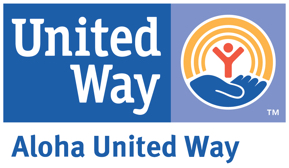
Feb. 10, 2023
By Hailey Kurtenbach
“The woman was having a hard time hanging onto the hand of a squirming 8-year-old and dialing a telephone at the same time. She was afraid she might misdial and lose her dime. She needed all the money she had. When she finally completed her call, a man with a very clipped accent answered. “Information and Referral Service. May I help you?”
“Yes, she told him. She and her child had been put out of their house by relatives. We have no money, no clothes, except what we have on, and we have no place to go. Welfare says I’m eligible for help, but it will take time to clear my application. Can you help us?”
He could. He knew that somewhere in his file of more than 400 community resource listings, he had an answer for the woman. Telling people where to turn is Murray Eby’s job.”
211 began with just one man
This excerpt is from a 1970s magazine article that is proudly displayed on the walls of the 211 Statewide Helpline office at Aloha United Way. Before the Community Resource Specialists we know and love today, there was Murray Eby (pictured below) – a local community member who championed the founding of 211’s predecessor, the Honolulu Information & Referral Service. He’s like the 211 godfather.

211 started as a seed project under the Health and Community Services Council. It was funded by several state departments and the Aloha United Fund (aka Aloha United Way). Within the first month, Murray’s team received 52 calls for service, many more than they had anticipated. The second month, calls doubled and then continued to increase.
In 1990, Aloha United Way partnered with the State to launch ASK-2000, Hawai‛i’s first statewide, 24-hour, toll-free helpline. The day it was activated, Governor John Waihee was on the line to take the first call – answering from the same N. Vineyard Boulevard building that houses 211 today.

"ASK-2000, formed under a partnership between the State of Hawaii & Aloha United Way, showed off the first copy of its newly published directory Connections 1991 to Governor John Waihee."
At the time, five specialists accessed the “ASK-2000 mini computer” to connect an average of 300 callers a day to community resources. By its second year of operation, the service had grown to 16 full and part-time employees who could direct people to over 3,000 public and private health and human service organizations in Hawai‛i.

"A sophisticated computer system allows ASK-2000 operators to give speedy replies to caller's questions about health and human services agencies."
According to a 1991 Honolulu Star-Bulletin article, requests varied greatly. One caller wanted to know if there was a lab that would purchase venomous insects, such as scorpions and centipedes. Another wanted to find an agency that would take a car without ownership or registration papers. Requests were made for support groups for children whose parents are dying of cancer. Another caller asked for plane fare to visit his brother before he died of AIDS.
New technology, same mission
What started as a one-man operation has grown to a team of 29. Today, the Helpline is staffed by 10 information and referral specialists, in addition to 8 care coordinators who specialize in Substance Use Disorder (SUD) services, a training and data analytics team, and several leadership positions. Not only are all of the resources listed on the new 211 website, but every resource can be searched for with keywords and zip code. While specialists are always available by phone, the service meets the needs of the "text" generation, offering text, online chat, and email communication options.
Specialists aren't restricted to a call center room thanks to other tech advancements. There’s even a specialist based on Maui, thanks to a partnership with Maui United Way. The 211 resource database has multiplied significanty and so have the options for those in need. As of January 2023, there are over 4,400 programs and services that specialists can connect callers with and SUD Care Coordinators provide sophisticated support to address subtance use disorders of all kinds in our communtiy.
211 has evolved significantly over the last 50 years, but the mission remains the same. The program connects people in our community with information and resources.

During the COVID-19 pandemic, 211 again took the lead in supporting the community during unprecedented times. In March 2020, 211 took over 2,000 calls in one day – an overwhelming volume that ended up crashing the system. In the months to follow, as people looked for somewhere to turn, calls continued to increase and staff members from other AUW departments were enlisted to help man the phone lines. Not only were they helping people with food insecurity, housing and utilities, and SNAP applications, they helped support pandemic-specific challenges like isolation and quarantine needs.
Over the past three years, 211 has continually upgraded their systems and processes – including the launch of a new and improved website in 2022, and the expansion of request data dashboards that help identify community needs and gaps in service. It's not just about providing service, it's about utilizing information to meet future needs more effectively.
Happy 211 Day, Hawai‛i!
February 11 is National 211 Day – a day for celebrating Murray Eby’s legacy and all the special ways that the 211 Statewide Resource Helpline connects thousands of people every year to the community services and support they need. We at Aloha United Way are so grateful for everyone on the 211 team today, and the incredible specialists who came before them!
